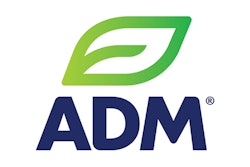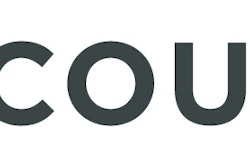
When it comes to pet food, customers are demanding more — and better — from the products they purchase: more innovation, better nutrition, more functionality. They want premium or superpremium (or at least something that makes them feel like they’re providing the premium experience to their pets), alternative ingredient options and a whole host of health benefits. All of these needs and wants came up during this year’s industry trends discussion, so let’s dive into what we’re likely to see in 2022 in the world of pet food nutrition.
Premiumization: continued growth in pet and human spaces
“Premiumization is more frequently expected by global pet owners, many of whom are interested in flexitarian lifestyles and sustainable food sources for themselves and their family members,” said Jorge Martinez Carrillo, president, pet solutions for ADM Animal Nutrition, a manufacturing, nutrition and marketing business that offers a wide range of products for the animal nutrition market. “Shoppers of premium and superpremium products are seeking ‘all natural’ or clean-label claims, including foods and treats made from organic and non-GMO ingredients without the use of artificial preservatives. Natural flavors and colors that look and taste great are also in demand.”
In a recent survey of U.S. dog and cat owners, Quotient (which offers omnichannel digital marketing capabilities that aim to drive value through consumer experiences) found that pet owners spend more money on pet food than any other pet-related purchases. They also found that gourmet meal and subscription services have risen significantly, and that homemade pet food is on the rise — all microtrends within the (super)premium framework.
“Nearly 17% of our survey respondents noted that they cook for their pet,” said Steven Boal, CEO of Quotient. “As a technology company dedicated to serving the grocery industry, what’s notable about this is that homemade pet food is made with the same ingredients that go into people food. There is now an opportunity for new brands — those you might consider for your own plate — to enter the pet food market, or at least consider merchandising their offerings differently. But really, what all of these trends underscore is that consumers want to feed their pets the very best.”
Premium trends are being identified in the retail space, as independent retail looks for growth opportunities.
“We believe gently cooked pet food, a new and upcoming category, is another pet specialty opportunity for independent retail to win,” said Chris Rowland, CEO of pet supply retailing corporation Pet Supplies Plus. “As we did with raw, freeze dried and other frozen items, this will be a great growth category. Like many things in pet specialty, we will see a number of manufacturing partners attracted to this category and we will see who the winners will be — we believe the industry will partner with the best brands and drive those most dedicated to independent pet specialty.”
It’s something pet owners seem to be willing to spend on, driving several other nutrition-related trends in its wake.
“Because consumers are more invested than ever in the food that their pets are consuming, the premium pet food market will continue to grow,” said Rebecca Casey, senior vice president of marketing and strategy for TC Transcontinental, a packaging, printing and specialty media company. “Today’s pet owner is looking for high-quality, individualized food for their pet. It is important that pet owners feel confident and secure in the food that they are feeding their companion, and they are willing to pay more for that surely.”
Ingredient innovations: alternative proteins, plant-based diets
“Encompassed within sustainability efforts is the usage of alternative proteins,” said Juan Gomez, global director for Alltech, which provides pet supplements and feed additives for pet health and nutrition. “There is a lot of interest in new and alternative sources of protein, and this is even more important in the face of climate change and the decline of natural resources. These alternatives will include insect, cell (lab-grown or cultured) and microbial proteins — however, we must note that all of these alternative proteins must prove they are more sustainable than the conventional sources of proteins they are replacing.”
In fact, a recent Packaged Facts report (U.S. Pet Market Focus: Pet Food Update, 2021) identified “the advance of superpremium pet foods in non-traditional forms,” including alternative proteins and plant-based diets, as one of the trends accelerated by the surge of pet spending during the COVID-19 pandemic. (Notably, sustainability was another trend on that list.) Other data-driven agencies that keep an eye on the pet food market are anticipating similar trends in 2022.
“We can expect human-grade food, the impact of adoptions/pandemic puppies and ingredient innovations such as insect proteins, grain-free and natural products to take the pet food market by storm during the upcoming year,” said Sam Smith, client manager for NielsenIQ, which measures shopper behaviors in a wide variety of industries. “In fact, we’re already seeing innovations like grain-free pet food rise in popularity after sales grew by 4.9% from July 2020 to July 2021.”
One much-discussed part of the alternative protein trend is the potential for vegetarian pet diets.
“[I think one trend will be] a move toward more plant-based food,” said Amanda Rolat, founder of Bramble, a dog food company that sells plant-based pet diets. “I think some companies will do a hybrid, a mix of animal and plant protein, because we’ve seen this in the human food industry so pet food companies will naturally follow.”
Of course, pet food is well-familiar with human food trends bleeding over into what said humans feed their animals.
“As human foods continue to push away from highly processed foods, we continue to see this trend flow into pet food ingredients as well,” said Justin Stadden, product group manager in Scoular’s feed division. Scoular buys, sells, stores, handles and processes grain, feed and food ingredients. “Whether it is raw, meat-first diets or growing demand for plant-based proteins, clean-label ingredients will continue to push their way to the top of pet food ingredient decks.”
Functional ingredients: managing pet health
Hovering over all of this is the genuine pet owner desire to take the best care possible of their animals.
“Functional ingredients in all types of pet food will become more popular,” said Ashlee Martin, senior application scientist for Oterra, which develops and manufactures natural coloring ingredients for food and beverages. “It will mimic the human trend of functional ingredients in human food and beverages that has started since COVID and will be transferred over into pet food. Pet parents will want to find foods that provide health benefits for their furry family member, and they will pay more for the premium ingredients. Products with these functional ingredients will have a health halo; therefore other clean label ingredients will be important in these pet foods/treats.”
Functionality and customization go together, as pet food buyers look for formulas that seem to cater to their pets’ specific needs.
“We [are seeing a] greater focus on functional food ingredients that are customized for specific needs from the species level to an individual pet,” said Carrillo. “There is a growing need for science-backed, real-food solutions that support proactive health management.”
The need for functional pet products seems to be one with staying power, according to the industry.
“With the pandemic as a background and rising health consciousness, immunity is on the mind of consumers,” said Gomez. “Building and maintaining a proper immune system through dietary choices (immuno-nutrition) and lifestyle changes has become imperative for many consumers, and this behavior extends to pets and their respective foods. In this context, immuno-nutrition is directly linked to ‘functional ingredients,’ or those ingredients that go beyond basic nutrition and provide an optimal health benefit.”
Of course, there have been functional pet supplements for quite some time, and demand for those types of products are also expected to continue growing.
“We expect pet parents to continue to seek non-drug alternatives for their pet’s health and wellness, like supplement chews and treats with added benefits for their pet,” said Steve Joyce, CEO of Tailored Pet Nutrition, a pet food company that provides customized products for pets.
Overall, it’s clear that there are a lot of directions for pet food companies to take if they’re looking to expand or refine their product lines, or even break into a new sub-category of pet food or treats. The best bets for 2022, according to the industry, are those items that speak to pet owners on a personal level: food and treats that will ensure pet parents feel like they’re providing their animals with premium, innovative or functional nutrition designed specifically for them.
2022 pet food business trends

















